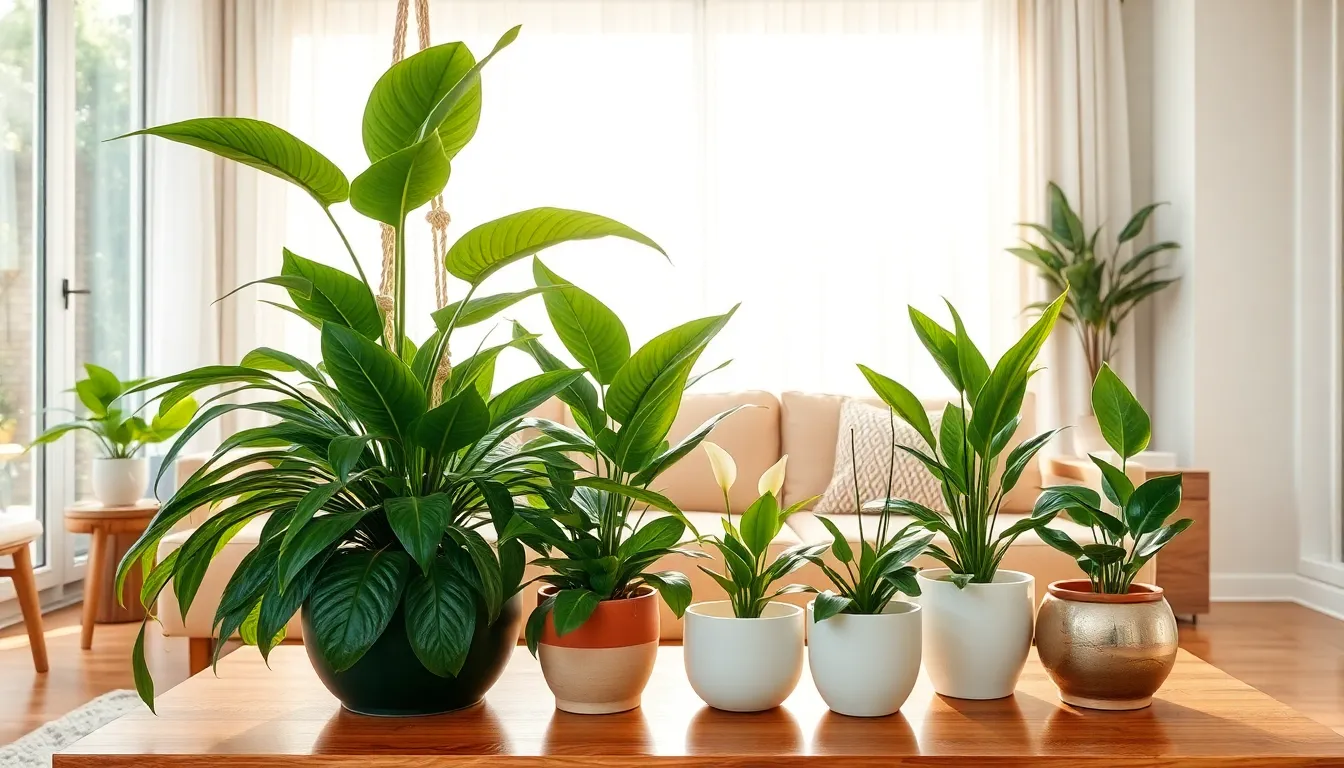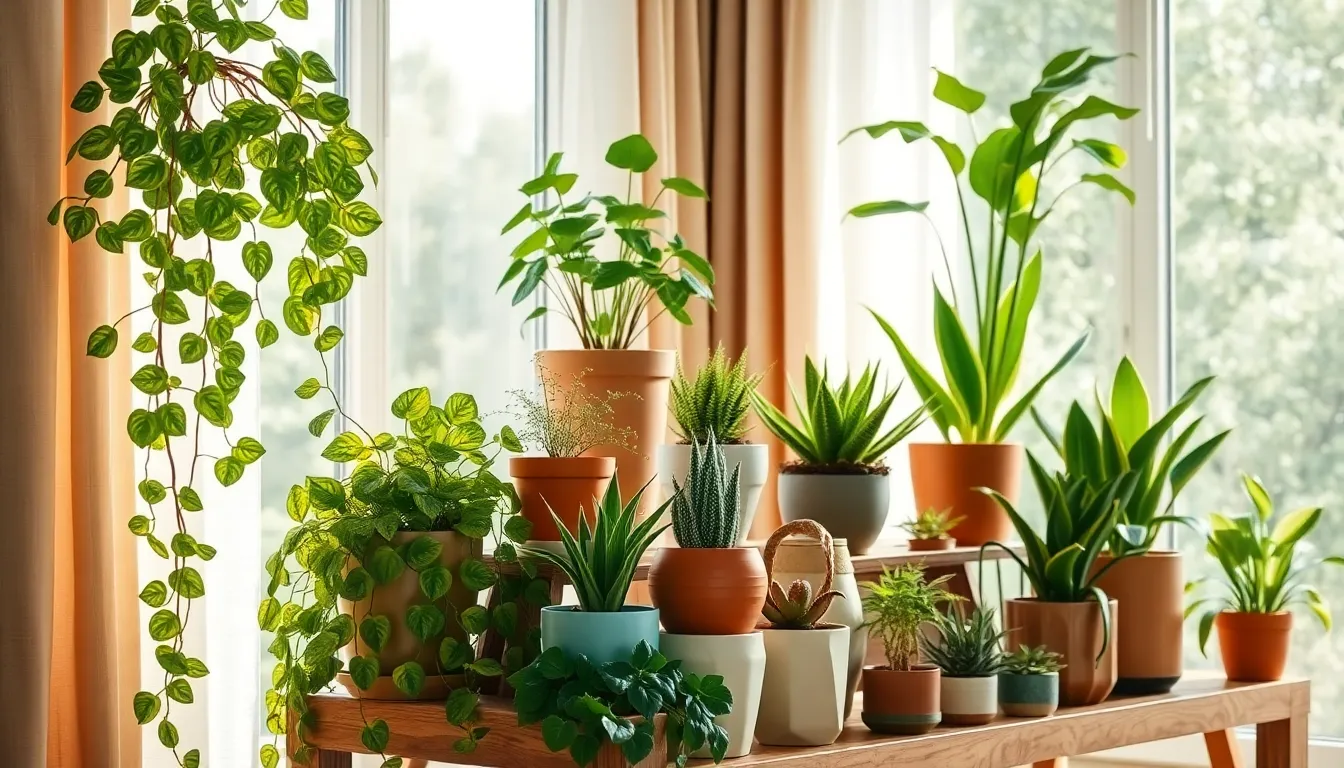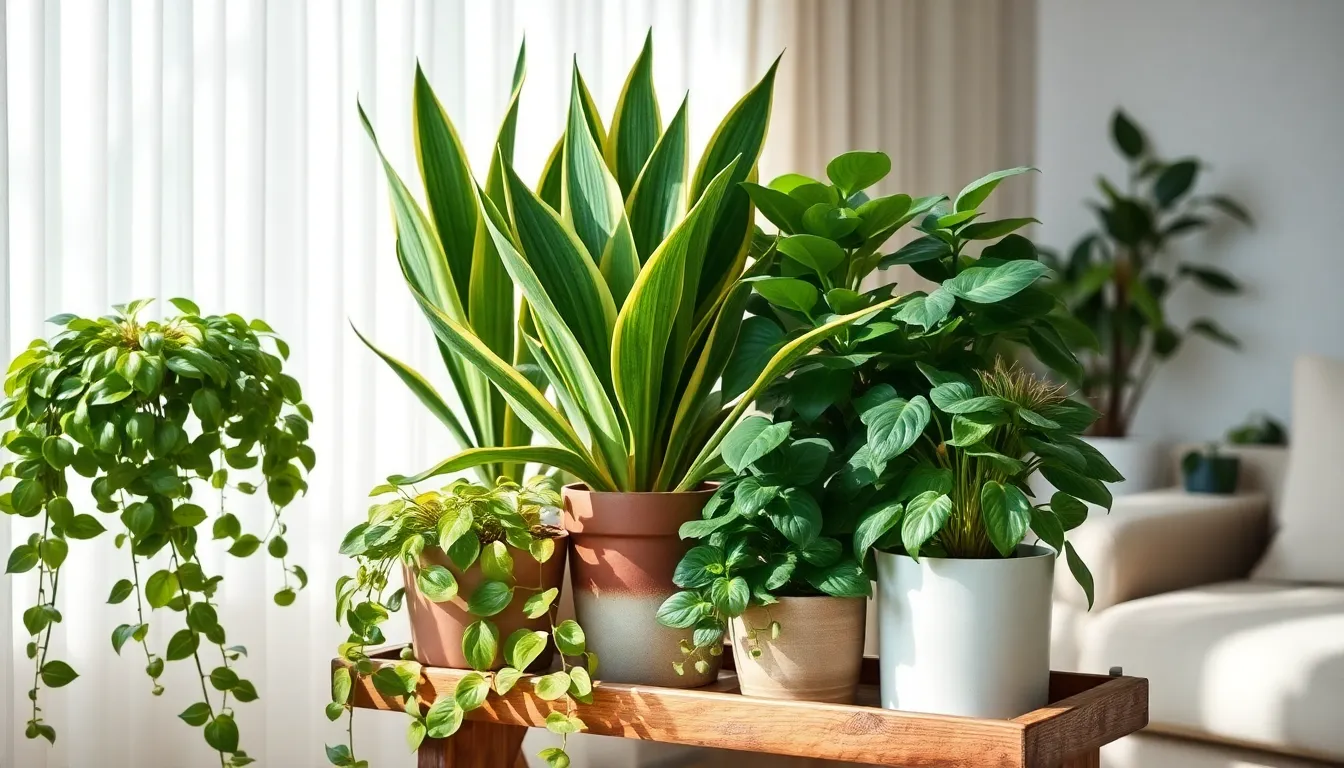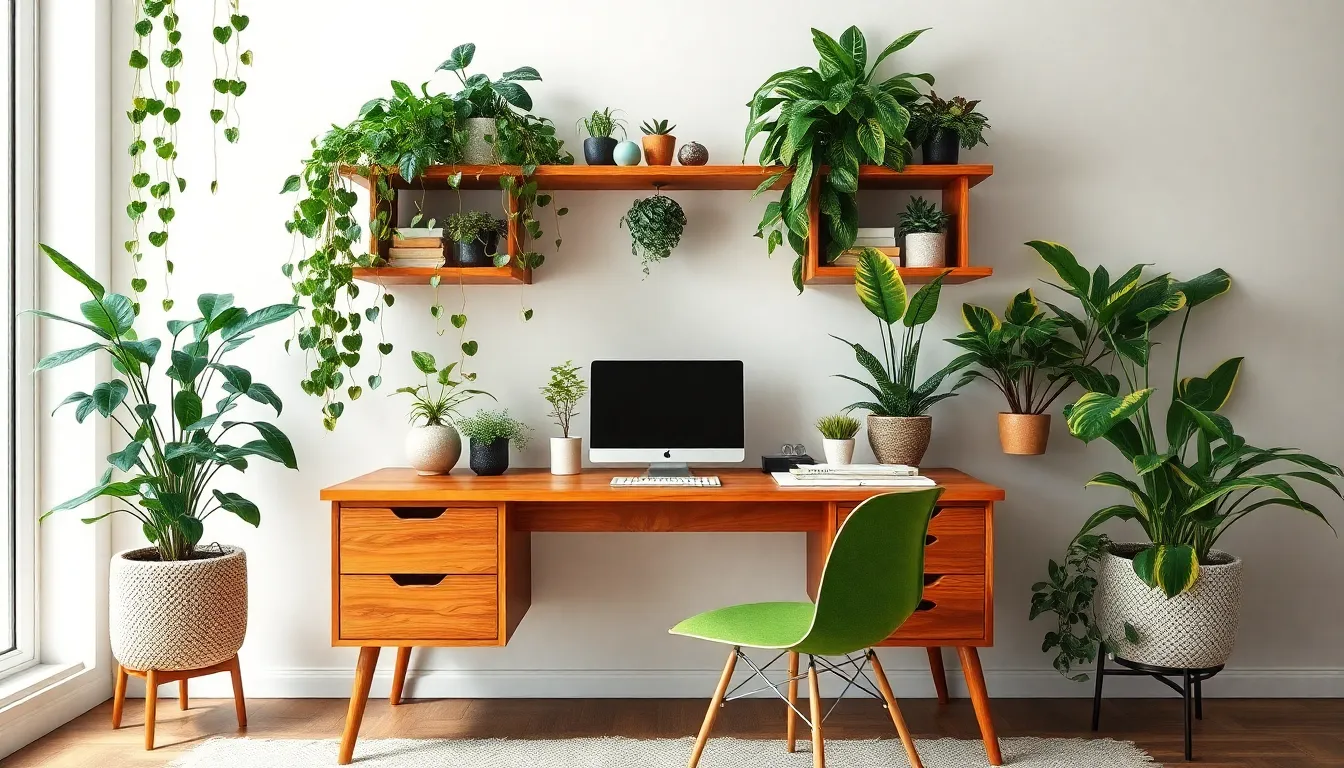Imagine transforming your home into a lush sanctuary where every breath you take feels fresher and more invigorating. The secret lies in welcoming specific indoor plants that not only beautify your space but also work tirelessly to purify the air you breathe. Whether you’re just beginning your gardening journey or have years of experience nurturing greenery, the world of indoor plants offers a delightful array of options that can elevate your home’s ambiance while enhancing its air quality.
Indoor plants are not merely decorative; they are your home’s natural air filters, quietly absorbing pollutants and releasing oxygen. In this article, we’ll explore ten remarkable plants renowned for their air-purifying prowess, revealing their unique characteristics and care needs. You’ll discover how even the simplest of plants can make a significant impact, and how to choose the ones that best suit your living environment. By the end, you’ll be equipped with the knowledge to cultivate a healthier, more vibrant indoor space, enriching both your home and well-being.
Why Indoor Air Quality Matters
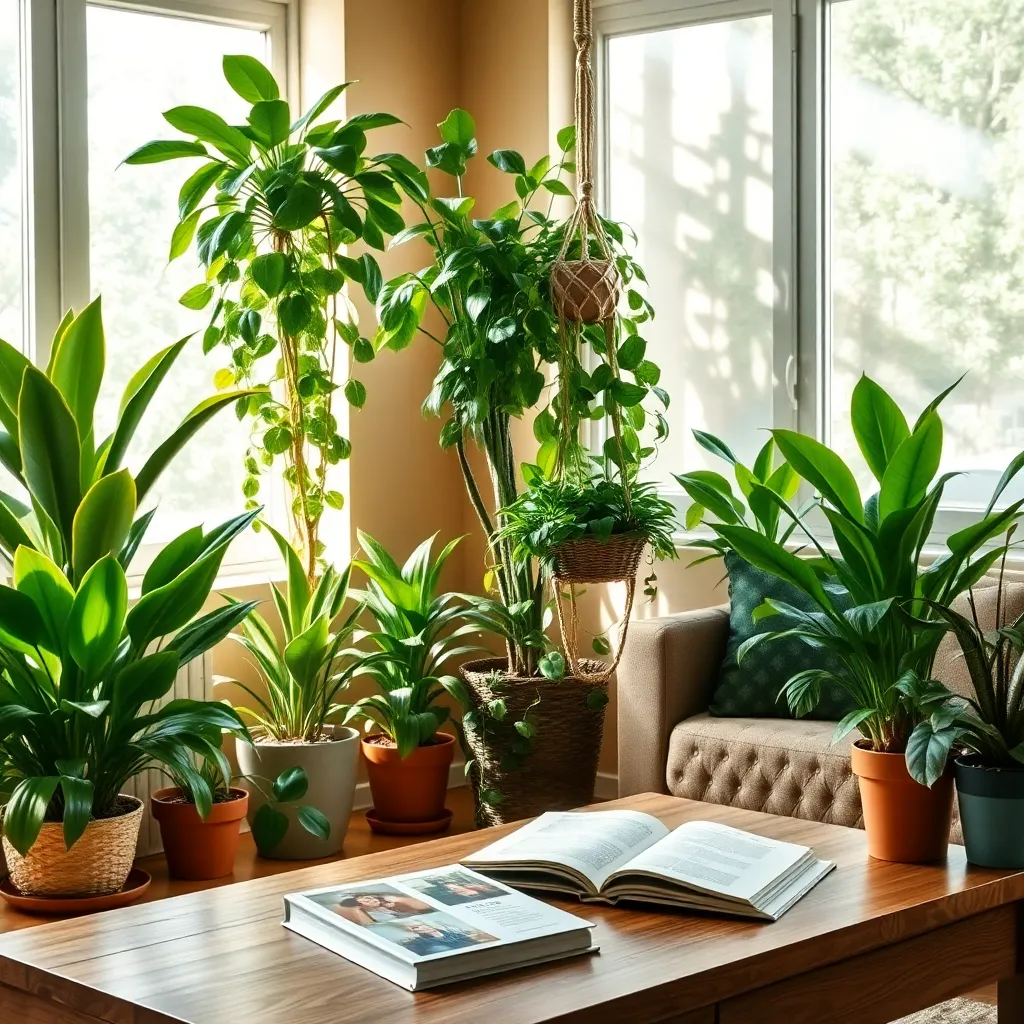
Indoor air quality directly affects our health and well-being, making it a crucial consideration for those who spend a lot of time indoors. Incorporating indoor plants is a natural and effective way to improve air quality, as they can help remove toxins and increase oxygen levels.
To enhance your indoor air quality, choose plants that are known for their air-purifying abilities, such as the spider plant, peace lily, or snake plant. These plants are not only effective but also relatively easy to care for, making them perfect choices for beginners.
For optimal growth and air purification, ensure that your chosen plants receive the right amount of light and water. Most air-purifying plants thrive in indirect sunlight and should be watered when the top inch of soil feels dry, but it’s important to avoid overwatering.
Advanced gardeners might consider using a mix of potting soil and perlite for better drainage and aeration, which can enhance plant health. Regularly wiping the leaves with a damp cloth can also help the plants perform their air-cleaning duties more efficiently by removing dust.
Top Benefits of Indoor Plants
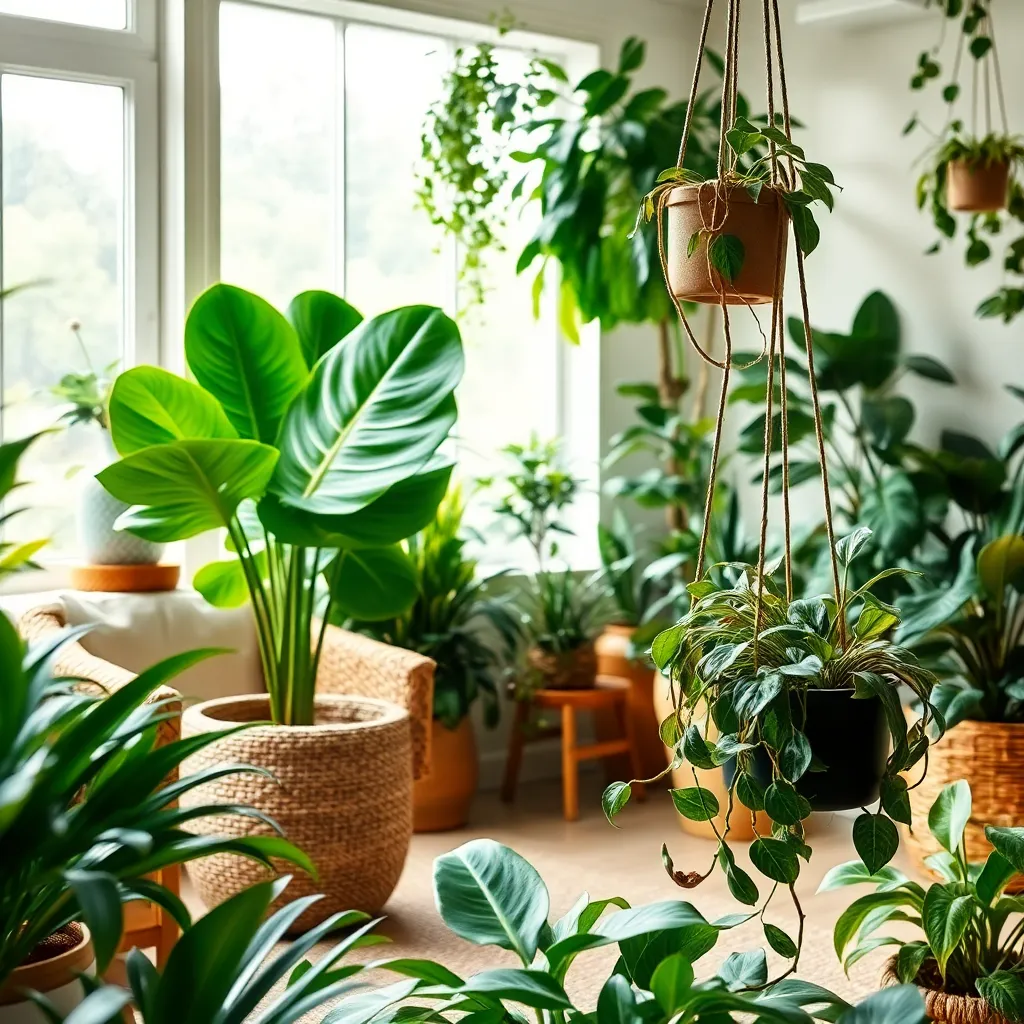
Indoor plants offer a host of benefits that extend beyond aesthetics. They can significantly improve indoor air quality by absorbing toxins such as formaldehyde and benzene. To maximize these benefits, consider placing a variety of plants in different rooms. This not only enhances air circulation but also adds a touch of nature to each space.
Having indoor plants can also boost your mood and reduce stress levels. Engaging in plant care, such as watering and pruning, provides a calming routine. Beginners should start with low-maintenance plants like the snake plant or pothos. These plants thrive in a variety of light conditions and require minimal watering, making them ideal for new gardeners.
For those with more experience, consider experimenting with plants that have specific humidity or light needs. Orchids, for example, benefit from a humid environment and indirect light. To maintain the right conditions, you might use a small humidifier or place your orchid near a bathroom window. Regularly misting the leaves can also help mimic their natural habitat.
Another advantage of indoor plants is their ability to increase humidity levels naturally. This can be particularly beneficial during dry winter months. Grouping plants together can enhance this effect, as they collectively release moisture into the air. Use a moisture meter to ensure you’re maintaining appropriate soil moisture, especially if you’re mixing plants with different water needs.
Choosing Low-Maintenance Varieties
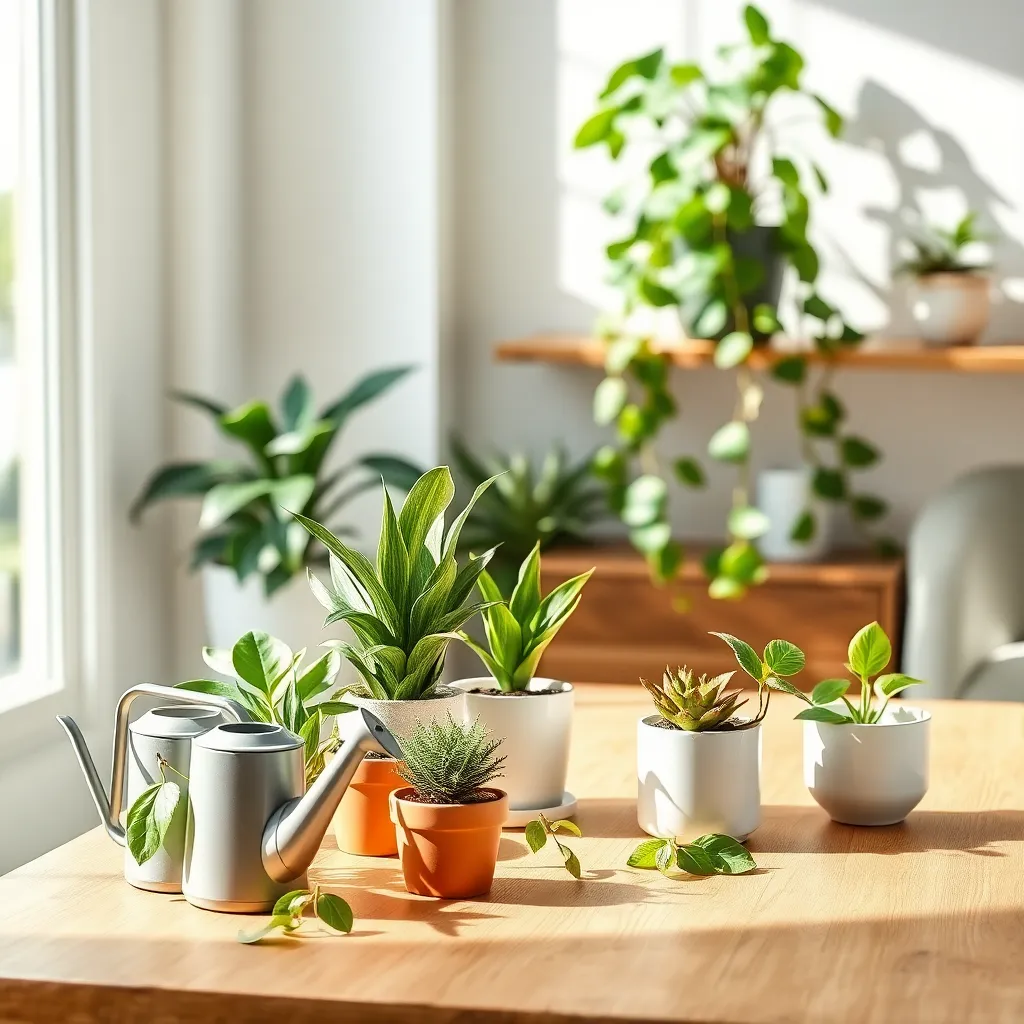
When selecting low-maintenance indoor plants, consider species that thrive with minimal care. Plants like snake plants and pothos are excellent choices as they adapt well to varying light conditions and infrequent watering.
For beginners, it’s crucial to start with plants that are forgiving in terms of neglect. Succulents, such as jade plants and aloe vera, require very little water and can survive in dry indoor environments, making them perfect for busy lifestyles.
Advanced gardeners can explore options like the ZZ plant, which is known for its resilience and air-purifying qualities. This plant thrives in low-light conditions and needs watering only once every few weeks, making it both practical and rewarding.
To ensure success with low-maintenance plants, use the right soil mix to support their growth. Opt for well-draining potting soil to prevent root rot, especially for succulents and cacti, which prefer drier conditions.
Spider Plant: A Natural Purifier
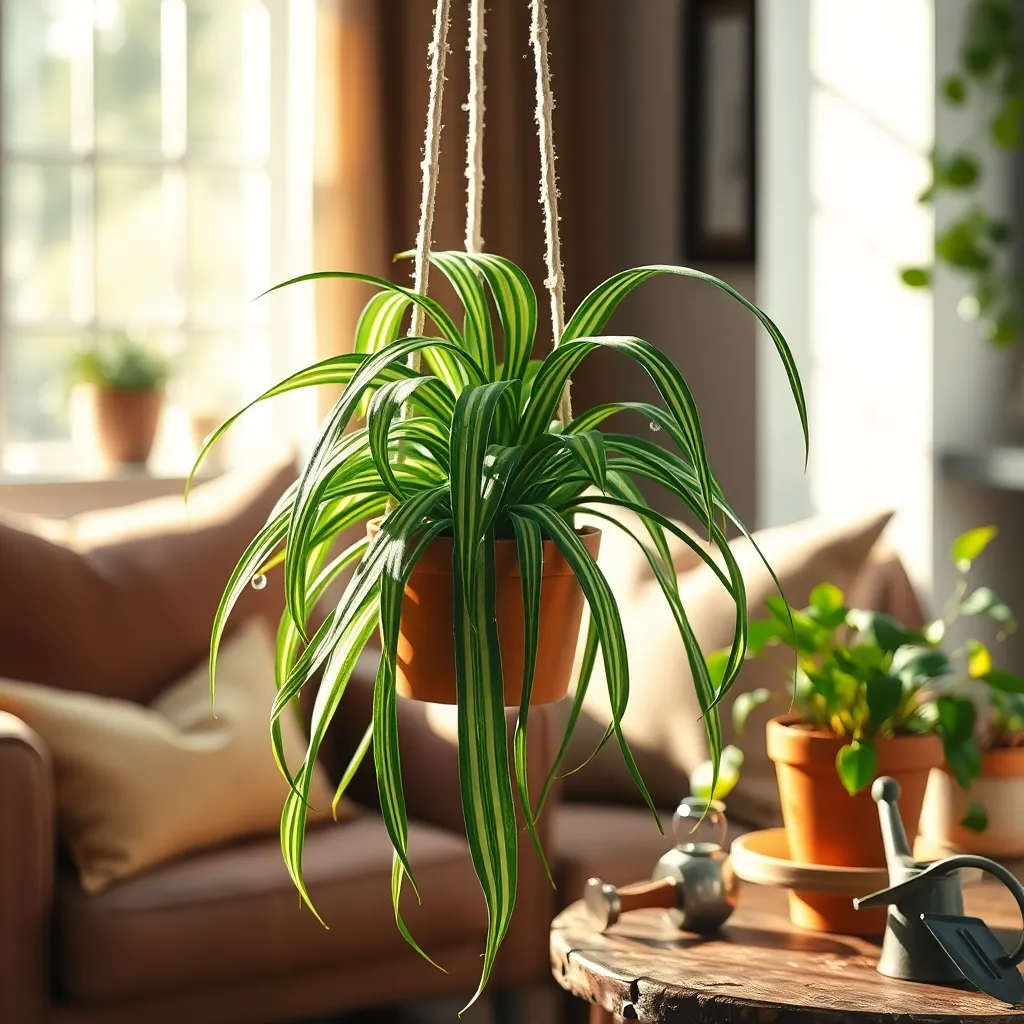
The spider plant, known for its lush foliage and arching leaves, is a natural choice for improving indoor air quality. This resilient plant is particularly effective at removing pollutants like formaldehyde and xylene from the air, making it both a beautiful and functional addition to any home.
For beginners, spider plants are a fantastic choice due to their forgiving nature and ease of care. They thrive in well-draining potting soil and prefer indirect light, which makes them suitable for various indoor locations.
Keep the soil slightly moist, but be cautious not to overwater, which can lead to root rot. During the growing season, watering once a week is typically sufficient, while in winter, you can reduce this to every couple of weeks.
Advanced gardeners may enjoy propagating spider plants from their offshoots, or “spiderettes,” which can be easily rooted in water or directly in soil. For optimal growth, fertilize your spider plant monthly with a balanced liquid fertilizer during the spring and summer months.
Snake Plant: Nighttime Oxygen Boost
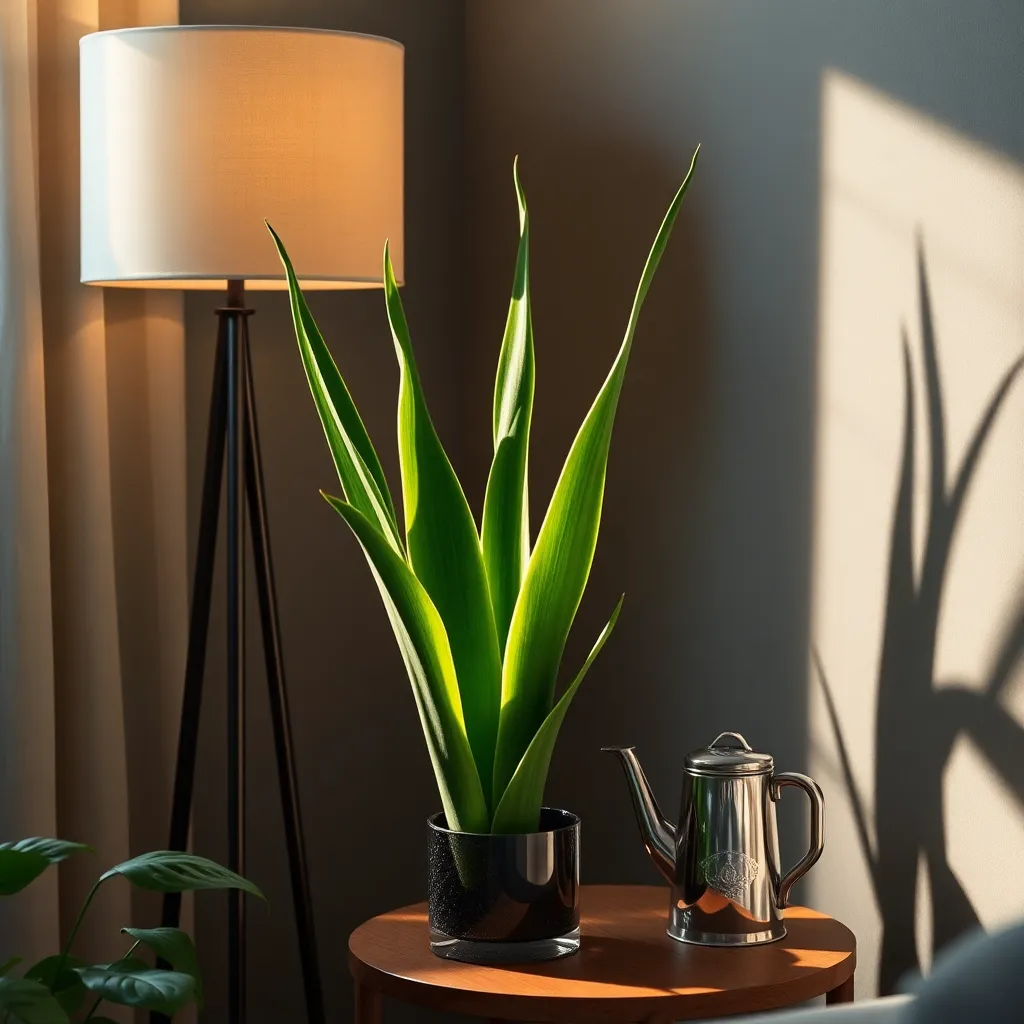
The snake plant, also known as Sansevieria or mother-in-law’s tongue, is a hardy succulent that offers a nighttime oxygen boost. Unlike most plants, it continues to release oxygen at night, making it an excellent choice for bedrooms where air quality is crucial.
This plant thrives in a variety of light conditions, from low light corners to bright, indirect sunlight. Beginners will appreciate its drought tolerance, as it only requires watering every two to six weeks, depending on light and humidity levels.
For optimal growth, use a well-draining soil mix, such as a cactus or succulent potting mix, to prevent root rot. Advanced gardeners can propagate snake plants by dividing the rhizomes, a simple process that can increase your plant collection.
Additionally, the snake plant is known for its ability to filter toxins such as formaldehyde and benzene from the air. By incorporating a snake plant into your home, you not only improve air quality but also enjoy a low-maintenance plant that complements any decor style.
Peace Lily: Humidity Enhancer
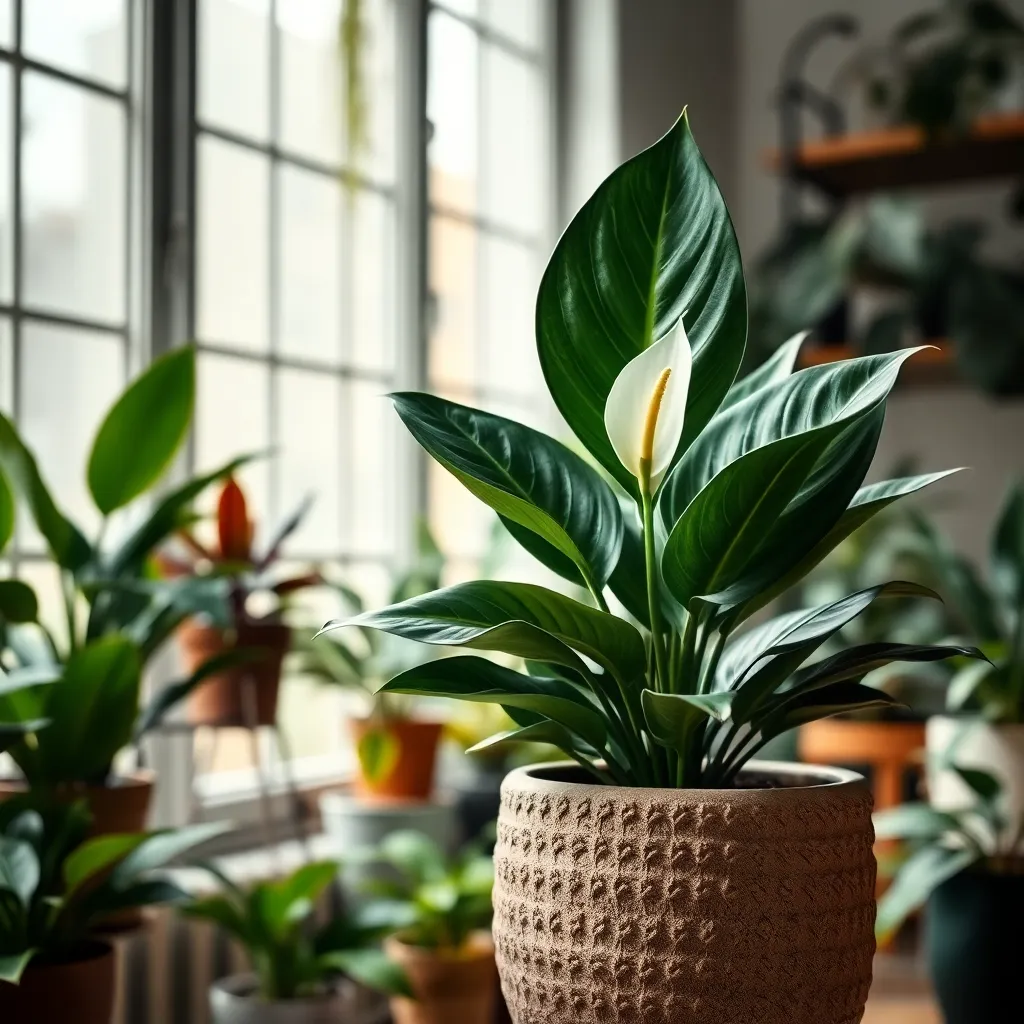
Peace lilies are not only beautiful but also excel in improving indoor humidity, making them a great choice for enhancing air quality. These plants thrive in indirect light and require minimal care, making them ideal for both beginners and experienced gardeners.
To keep your peace lily healthy, ensure it is potted in a well-draining soil mix, such as a combination of peat moss, pine bark, and perlite. Water your plant when the top inch of soil feels dry, but be cautious not to overwater, as they are sensitive to excess moisture.
One of the key features of peace lilies is their ability to thrive in high humidity environments, which can be beneficial for your indoor air quality. To boost humidity, consider placing your plant on a tray filled with pebbles and water, ensuring the pot is above the waterline to prevent root rot.
Advanced gardeners can encourage larger blooms by using a balanced, water-soluble fertilizer every six to eight weeks during the growing season. Regularly wiping the leaves with a damp cloth also helps keep the foliage dust-free, enhancing the plant’s ability to purify air.
Aloe Vera: Healing and Purifying
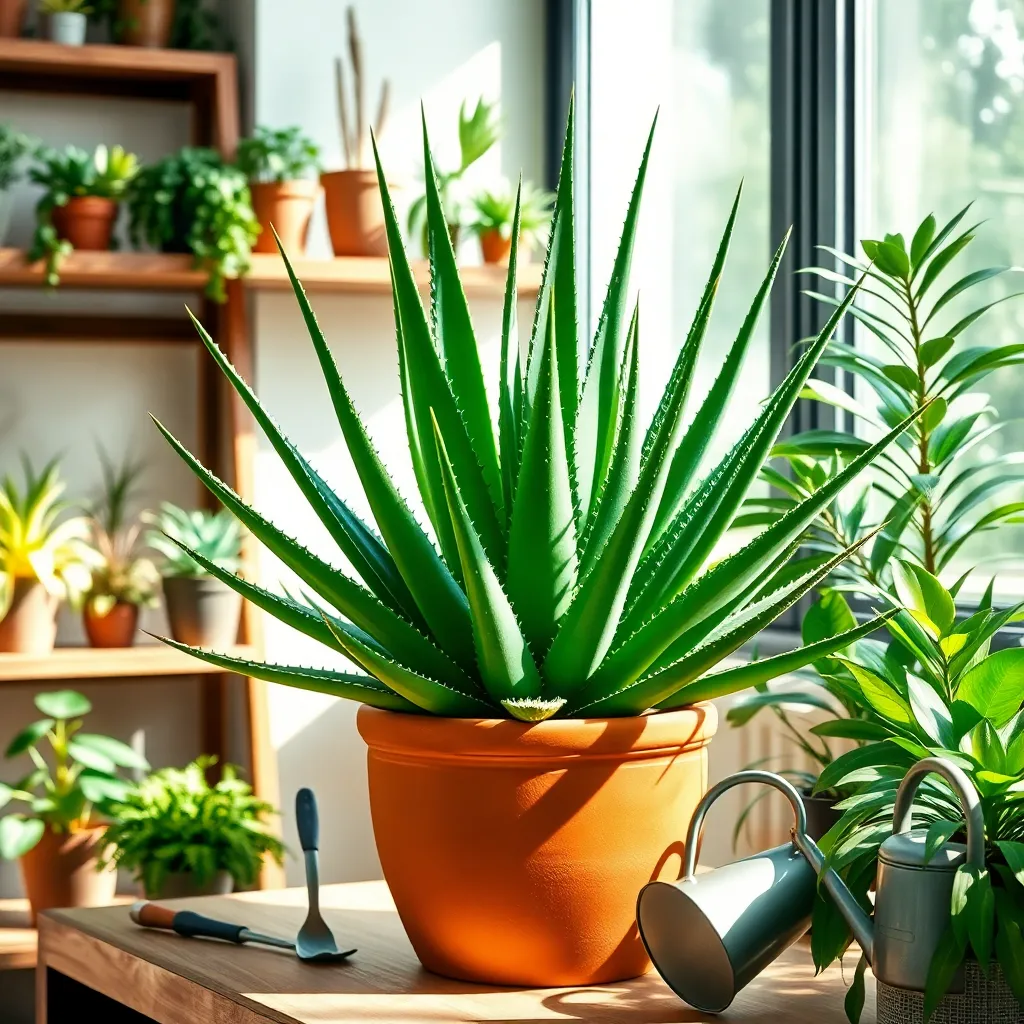
Aloe Vera is a remarkable plant known for its healing properties and ability to purify the air. Originating from arid climates, this succulent thrives indoors with minimal care, making it an excellent choice for beginners and experienced gardeners alike.
Place your Aloe Vera in a bright spot, ideally with indirect sunlight, to encourage healthy growth. While it does well in various lighting conditions, avoiding direct sunlight will prevent the leaves from scorching.
Use a well-draining potting mix, such as a cactus or succulent blend, to ensure proper drainage and prevent root rot. Water your Aloe Vera sparingly, allowing the soil to dry out completely between waterings, which typically means once every two to three weeks.
For those looking to maximize the health benefits of Aloe Vera, regularly remove any dead or damaged leaves to promote new growth. Additionally, fertilize the plant with a balanced, water-soluble fertilizer during the spring and summer months to boost its vitality.
English Ivy: Compact Air Cleaner
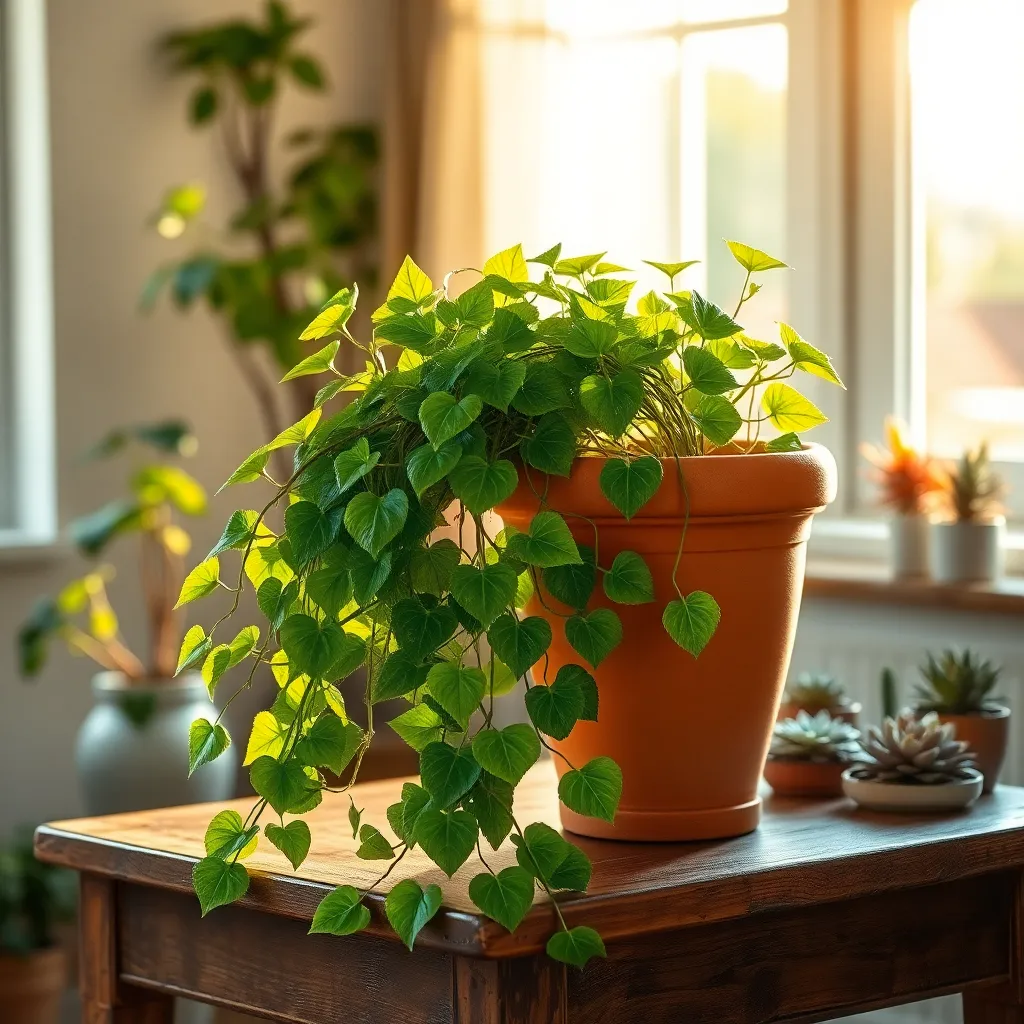
English Ivy is not only a beautiful addition to your indoor garden but also an excellent air purifier. This hardy plant can help reduce mold and other airborne allergens, making it a popular choice for improving indoor air quality.
Thriving in a variety of light conditions, English Ivy prefers bright, indirect sunlight but can also tolerate low-light areas. To keep your ivy healthy, water it moderately, allowing the top inch of soil to dry out between waterings to prevent root rot.
For optimal growth, plant your English Ivy in a well-draining potting mix. Consider using a soil blend that includes peat moss and perlite to ensure proper drainage and aeration.
Beginners will find English Ivy relatively easy to care for, while more experienced gardeners can experiment with training it to climb or trail. If you’re looking to propagate, simply take cuttings and root them in water or directly in soil for new plants.
Rubber Plant: Large-Leaf Freshness
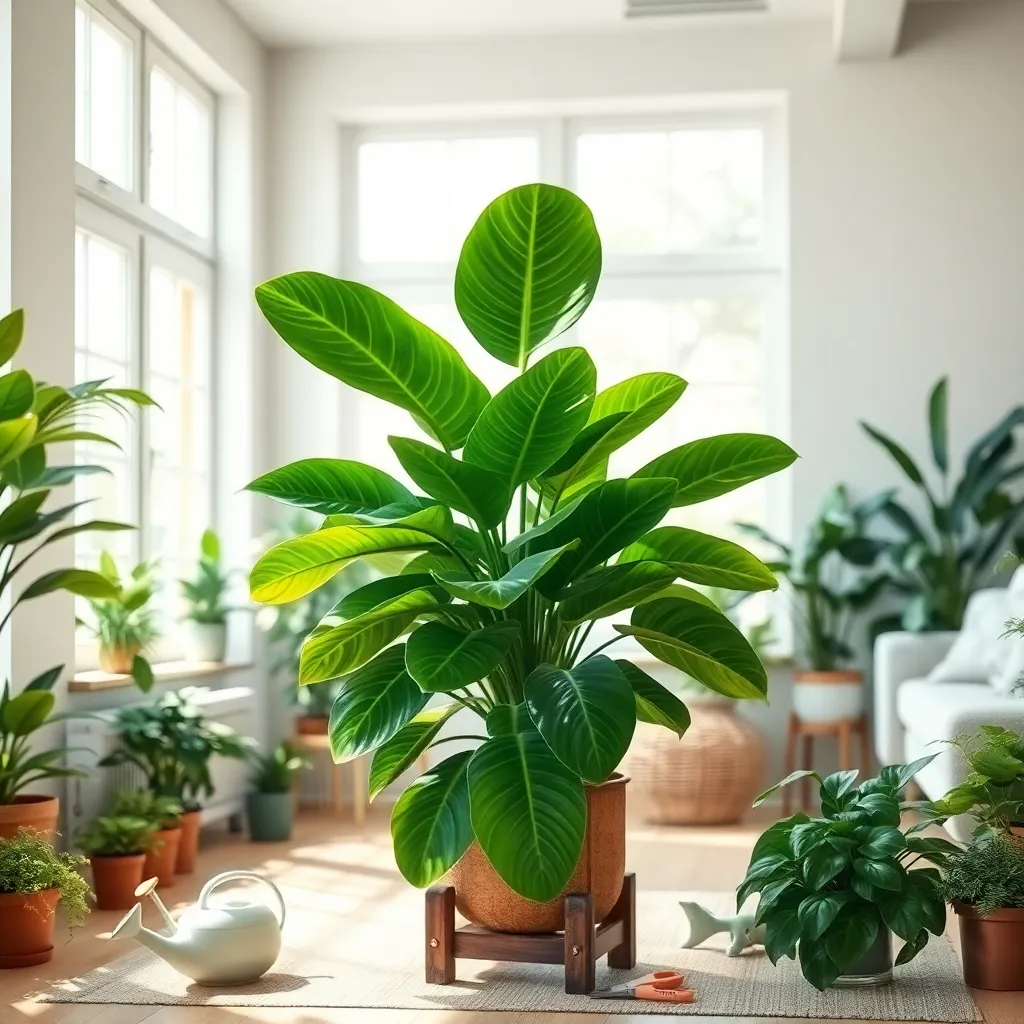
The rubber plant, known for its glossy, large leaves, is an excellent choice for improving indoor air quality. Its lush foliage not only beautifies your space but also helps purify the air by removing toxins such as formaldehyde.
To thrive, rubber plants need bright, indirect sunlight, making them perfect for east or west-facing windows. Avoid direct sunlight to prevent leaf scorching, and ensure the plant is rotated occasionally to maintain even growth.
Watering is crucial for rubber plants, as they prefer consistently moist but not waterlogged soil. Use a well-draining potting mix, such as one containing peat, pine bark, and perlite, and water when the top inch of soil feels dry.
For those looking to enhance their rubber plant’s growth, occasional feeding with a balanced liquid fertilizer during the growing season is beneficial. Pruning can help maintain its shape and encourage bushier growth; simply trim back unruly stems as needed.
Caring for Your Indoor Oasis
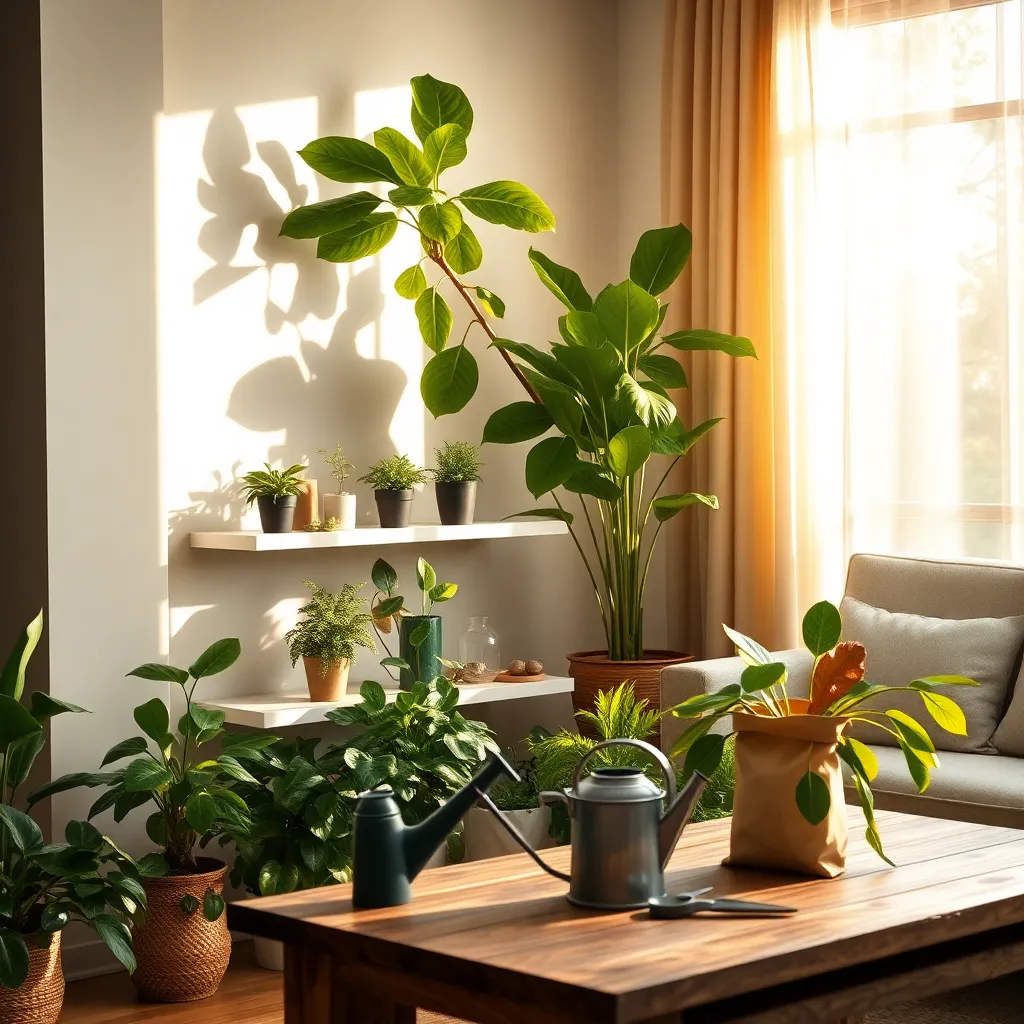
Creating an indoor oasis begins with understanding the needs of your plants to ensure they thrive. Lighting is crucial; most indoor plants benefit from bright, indirect sunlight, so place them near windows but away from direct sun, which can scorch leaves.
Watering is another essential aspect of plant care. Check the soil moisture regularly by sticking your finger about an inch into the soil; if it feels dry, it’s time to water. Overwatering is a common mistake, so always ensure pots have drainage holes to prevent root rot.
Humidity is often overlooked but critically important for indoor plants, especially in dry climates or during winter. Increase humidity with a simple pebble tray beneath your plants or by using a humidifier. Misting can also help, but ensure it’s appropriate for the specific plant species.
Feeding your plants provides nutrients they need to grow lush and healthy. Use a balanced, water-soluble fertilizer monthly during the growing season, typically spring and summer. For advanced care, consider using organic fertilizers like compost tea, which can enhance soil health and plant vitality.
Conclusion: Growing Success with These Plants
In exploring the benefits of indoor plants for better air quality, we’ve uncovered ten key relationship concepts: enhancing communication through shared activities, fostering nurturing habits, developing patience and understanding, prioritizing mutual well-being, creating a tranquil environment, embracing teamwork in care-taking, cultivating growth together, building resilience through responsibility, sharing moments of peace, and nurturing a sense of accomplishment. These concepts are not just for plant care but are essential building blocks for nurturing any relationship.
As an actionable next step, consider selecting one of these plants and partner with your loved one to care for it. This simple act can become a meaningful ritual that strengthens your bond.
Remember, the journey to a thriving relationship is like tending to a garden—it requires attention, love, and frequent nurturing. Bookmark this article so you can revisit these concepts and continue to enrich your relationship with nature’s wisdom.
Looking ahead, imagine the success in your relationships, not just surviving but thriving, as you apply these principles consistently. With every leaf, let your partnership grow stronger and more resilient. Embrace this opportunity to deepen your connection and watch as your relationship flourishes.

